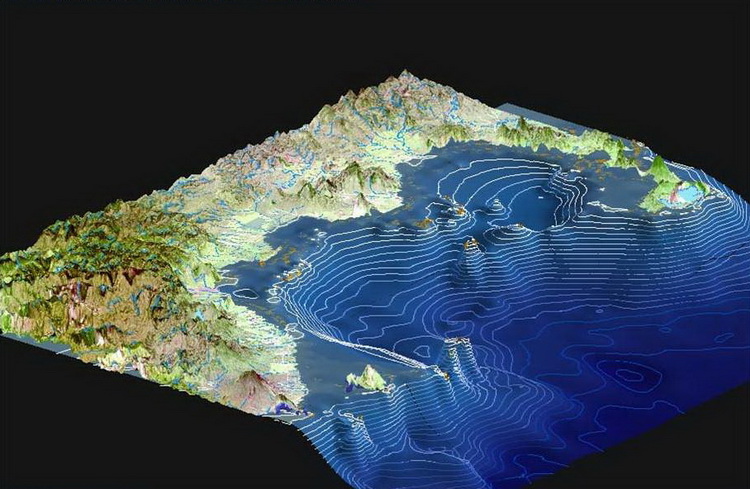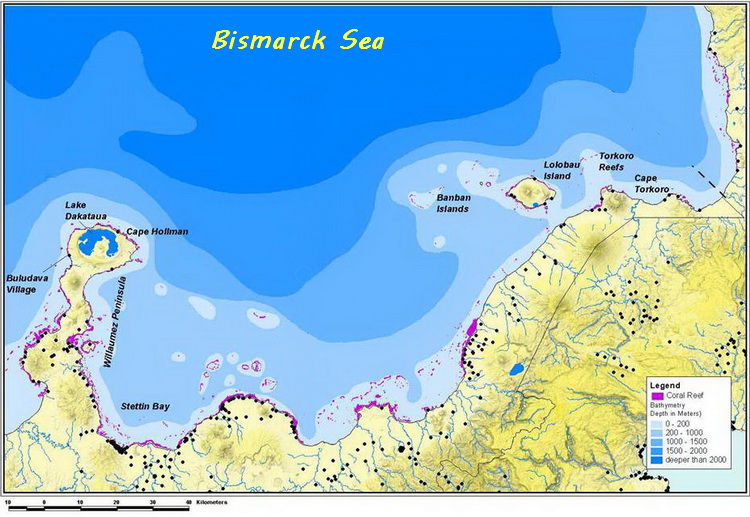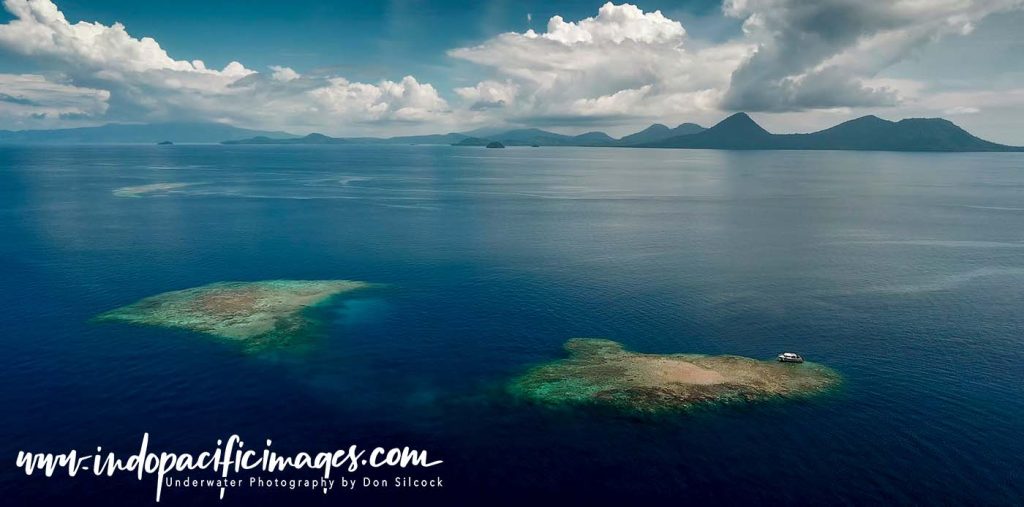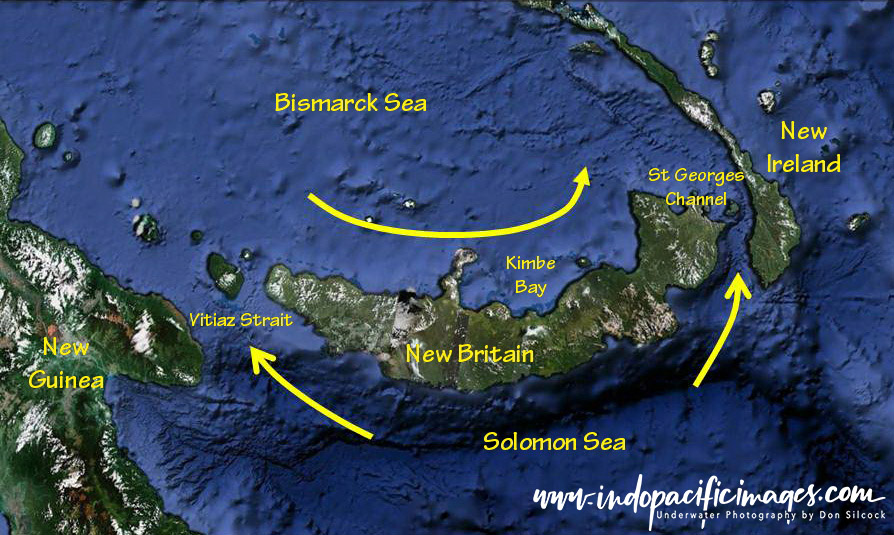Kimbe Bay Biodiversity… There is a line of thought among the marine scientific community that this large bay on the north coast of New Britain is probably where the first corals originated.
A theory that has evolved as a result of the surveys conducted to assess and quantify the bay’s biodiversity.
The first of those surveys was done back in 1993 by The Nature Conservancy (TNC).
TNC conducted a Rapid Ecological Assessment (REA) on 78 sites in Kimbe Bay. The REA identified a staggering 860 species of fish together 345 species of stony corals.

To put that in a global perspective… In an area roughly the same size as California. It is estimated that Papua New Guinea is home to almost 5% of the world’s total marine biodiversity. And just under half of that fish fauna and virtually all of the coral species are to be found in Kimbe Bay.

Kimbe Bay Biodiversity – Why is it so Biodiverse?

Kimbe Bay biodiversity is a function of three key factors – location, topography and geography….
Physically, it is located on the north coast of New Britain. And its boundaries are the Willaumez Peninsular to the west and Cape Tokoro, some 140km to the east.
Therefore Kimbe Bay is sheltered from the worst of New Britain’s weather.
The underwater topography of its location adds to Kimbe Bay biodiversity.
Because from the shore-line there is a sloping shelf down to around 200m (light blue on the map).
The shelf is roughly 3-5km wide and parallel to the shore all the way around the bay. From there, a much wider shelf drops down to as deep as 1000m (pale blue on the map). Before descending in to the 2000m+ depths of the Bismark Sea to the north.
Along that second shelf are dramatic seamounts and coral pinnacles. Which rise up towards the surface and provide isolated ecosystems for the marine creatures of the bay. Those seamounts also act as beacons to the many pelagic and marine mammal species that enter the bay. And, in the process, they also provide some of its very best diving…
The deep waters and generally benign conditions are really important. Because Kimbe Bay functions as a nursery for the amazing array of marine creatures that are the source of its incredible biodiversity. But those creatures need to eat and that is where the geography comes in.

Geography Helps…
To the south of New Britain are the 4000m deep-water basins of the Solomon Sea. And, to the east, are the powerful southern equatorial currents of the Pacific Ocean.
As those currents approach the south coast of New Britain. Upwellings are created that suck up the nitrogen and phosphorous laden detritus from those deep basins.
Carrying them north through the Vitiaz Strait in the west, and the St Georges Channel in the east, in to the Bismarck Sea. Where they enter the predominantly anticlockwise circulation produced by the regional current flows.

As those currents flow along the north coast of New Britain, they pass around the top of the long and narrow Willaumez Peninsula producing eddies in the western part of Kimbe Bay, which suck the nutrient rich flows into the bay. Therefore inducing additional upwellings from the deep water basins to the north.
In a nutshell… The forces of nature have combined to produce an almost perfect natural environment that has created Kimbe Bay’s incredible biodiversity!
Back To: The Complete Guide to Diving Kimbe Bay
